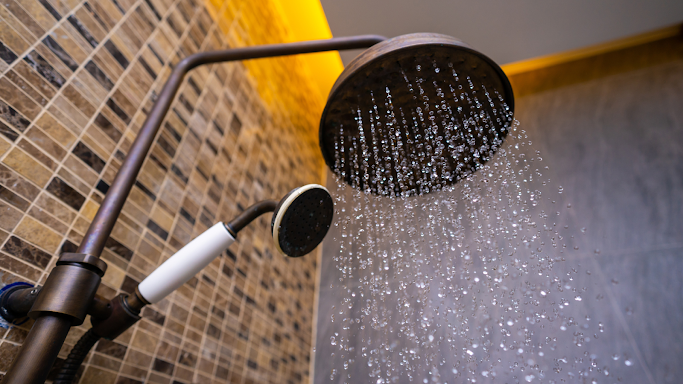Kitchen Installation Sequence: Cabinets, Counters, or Flooring First?
The Standard Professional Sequence
Flooring First (Recommended Approach)
Most professional contractors recommend installing flooring before cabinets for several compelling reasons. This sequence creates a continuous surface that extends under cabinets, providing stability and preventing settlement issues over time. It also eliminates the need for quarter-round trim that creates dated, unprofessional appearances.
When flooring goes in first, cabinets sit directly on the finished surface, creating cleaner lines and better long-term stability. This approach works best with tile, luxury vinyl plank, and engineered hardwood that can handle cabinet weight without damage.
Cabinet Installation Second
Cabinets are installed on the completed flooring, starting with base units positioned precisely according to layout plans. Wall cabinets follow, hung level and secure, before any countertop work begins. This sequence allows perfect alignment and eliminates the awkward gaps that occur when flooring must be cut around installed cabinets.
Professional installation ensures cabinets remain level and properly aligned throughout the remaining installation phases. Base cabinets must be perfectly positioned since countertop templating depends on exact cabinet placement.
Countertop Templating and Installation
Countertop professionals measure and template after cabinet installation is complete, ensuring perfect fits without gaps or overhangs. Natural stone and engineered quartz require precise measurements that can only occur with cabinets in their final position. Templating typically happens 1-2 weeks before installation.
Laminate countertops can be pre-fabricated and installed immediately after cabinet completion, while stone materials require the template-fabricate-install sequence that adds 7-10 days to the timeline.
Alternative Sequence: When Cabinets Go First
Situations Requiring Cabinet-First Installation
Certain flooring materials and project constraints require installing cabinets before flooring. Solid hardwood that needs extensive site acclimation, specialty tiles requiring precise cuts, or projects with existing appliances in place may benefit from cabinet-first sequencing.
This approach requires careful planning to ensure flooring transitions properly to cabinet bases without visible gaps or awkward trim solutions.
Protective Measures for Cabinet-First Projects
When cabinets are installed first, extensive protection prevents damage during flooring installation. Cover cabinet faces, remove drawers and doors, and use heavy cardboard or plywood to protect finished surfaces from scratches, impacts, and adhesive damage.
Professional flooring installers coordinate closely with cabinet teams to ensure proper transitions and minimize damage risks during installation.
Backsplash and Appliance Timing
Backsplash Installation Always Comes Last
Backsplash installation occurs after cabinets and countertops are complete, providing clean start and stop lines for tile or stone installations. This timing prevents damage during other installations while ensuring perfect alignment with cabinet and counter edges.
Attempting backsplash installation before countertops creates measurement challenges and often requires rework when counters don't align exactly with pre-installed tile.
Appliance Installation Coordination
Major appliances typically install after countertops, but may require coordination with backsplash work. Built-in appliances requiring custom panels must wait for cabinet completion, while freestanding units can be installed earlier if properly protected during the remaining work.
Range installation often coordinates with backsplash work since tile must align properly with appliance edges and ventilation requirements.
Material-Specific Considerations
Hardwood Flooring Challenges
Solid hardwood presents unique sequencing challenges due to expansion, contraction, and seasonal movement. Installing hardwood after cabinets prevents continuous surface benefits but protects expensive materials from construction damage. Engineered hardwood offers more flexibility in installation timing.
Tile Flooring Advantages
Ceramic and porcelain tiles work excellently with flooring-first installation since they provide stable, moisture-resistant surfaces that handle cabinet weight effectively. Large format tiles create fewer seams and a cleaner appearance when extended under cabinet bases.
Luxury Vinyl Benefits
LVP flooring excels in flooring-first installations, providing stable surfaces with built-in moisture protection. The floating installation method accommodates minor cabinet settling without damage while maintaining a clean appearance throughout the kitchen.
Professional Installation Best Practices
Experienced contractors protect all installed materials throughout the remaining phases, using appropriate coverings and handling procedures. They coordinate trades carefully to prevent scheduling conflicts and maintain quality standards through project completion.
Proper sequencing requires clear communication between flooring contractors, cabinet installers, countertop fabricators, and tile setters to ensure smooth handoffs and perfect final results.
For comprehensive guidance on coordinating all installation phases effectively, explore the detailed phases of kitchen renovation from start to finish, which provides strategic planning for every aspect of kitchen renovation sequencing.
Frequently Asked Questions
Should I install flooring before or after cabinets?
Most professionals recommend flooring first for cleaner lines, better stability, and elimination of quarter-round trim. This creates continuous surfaces and prevents long-term settling issues.
What flooring materials work best with cabinet-first installation?
Luxury vinyl plank, engineered hardwood, and ceramic tile adapt well to either sequence. Solid hardwood often requires cabinet-first installation due to acclimation and expansion concerns.
When do countertops get templated and installed?
Countertops require templating after cabinet installation completion, followed by 7-10 days for fabrication and installation. This ensures perfect fits without gaps or alignment issues.
How long does the installation sequence typically take?
Flooring requires 2-4 days, cabinet installation takes 3-5 days, countertop templating and installation spans 1-2 weeks, and backsplash completion adds 2-3 days to the timeline.
Ready to ensure perfect installation sequencing for your kitchen renovation? Get a free quote and detailed installation timeline from our experienced team, who understand how to coordinate all trades for flawless results. Visit our Richmond Hill or Woodbridge office to discuss your installation requirements and explore options that deliver professional quality throughout every phase.

.png)

Comments
Post a Comment